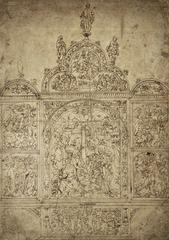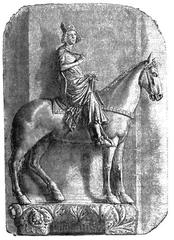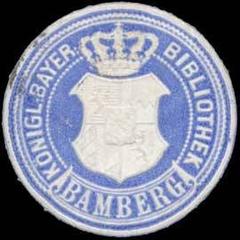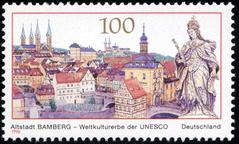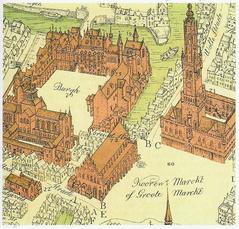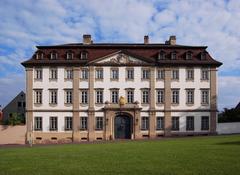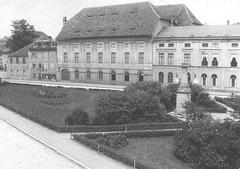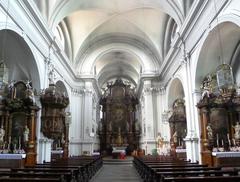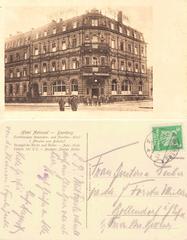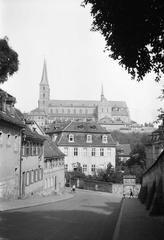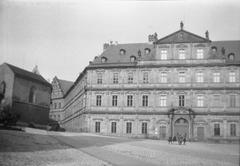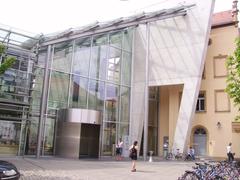Luitpolddenkmal Bamberg: Visiting Hours, Tickets, and Historical Information
Date: 14/06/2025
Introduction
The Luitpolddenkmal in Bamberg stands as a tribute to Prince Regent Luitpold of Bavaria, whose regency from 1886 to 1912 marked an era of stability, prosperity, and cultural growth in Bavaria. Seamlessly integrated into Bamberg’s UNESCO World Heritage-listed landscape, the monument is a vital stop for anyone interested in Bavarian history, public art, or urban heritage. This guide offers all you need to know about the Luitpolddenkmal: its history and symbolism, practical visitor information, nearby attractions, and how it continues to shape Bamberg’s civic identity (Bamberg Tourism, Mapcarta, HolidayCheck).
Table of Contents
- Historical Background and Cultural Significance
- Visitor Information
- Monument Features and Symbolism
- Visitor Experience and Practical Tips
- Nearby Attractions
- Conservation and Community Engagement
- Frequently Asked Questions (FAQ)
- Conclusion
- References
Historical Background and Cultural Significance
Origins and Historical Context
Erected in honor of Prince Regent Luitpold of Bavaria (1821–1912), the Luitpolddenkmal reflects Bamberg’s admiration for a ruler celebrated for his moderate leadership and cultural patronage. Commissioned by Bamberg’s citizens and designed by renowned sculptors such as Ferdinand von Miller and Wilhelm von Rümann, the monument was inaugurated in the early 20th century, a period that saw many public memorials dedicated to the Wittelsbach dynasty. Its unveiling was marked by elaborate ceremonies attended by local dignitaries and members of the royal family (de.wikipedia.org).
Significance in Bamberg’s Heritage
The Luitpolddenkmal underscores Bamberg’s integration into the Bavarian state and symbolizes local loyalty to the monarchy during a time of transformation. It is strategically located—originally near Bamberg Cathedral, and since 1979 at Schönleinsplatz—framing the entrance to major city arteries and public spaces. The monument is surrounded by prominent cultural institutions and green areas, making it a focal point for civic life (HolidayCheck).
Enduring Legacy
Luitpold’s regency is remembered as a golden age of modernization and cultural vitality in Bavaria. The monument remains a site for commemorative events, public ceremonies, and local gatherings, reinforcing its importance in Bamberg’s collective memory (en.bamberg.info).
Visitor Information
Location and Accessibility
- Address: Schönleinsplatz, 96049 Bamberg, Germany (Mapcarta)
- Getting There: Schönleinsplatz is a central Bamberg square, well-served by city bus lines and within walking distance from Old Town and Bamberg train station. Parking is available nearby, though limited during peak times.
- Accessibility: The area is flat and paved, making it suitable for wheelchairs and strollers. Benches and shaded areas are available for rest.
Visiting Hours
- The Luitpolddenkmal is an outdoor monument accessible 24 hours a day, 7 days a week.
Tickets and Admission
- Free of charge: No tickets or admission fees are required.
Guided Tours and Events
- The monument features on many Bamberg walking tours, which provide expert historical and artistic context (Bamberg Tour Guides).
- Annually, events like Luitpold Day feature ceremonies, music, and community celebrations at the monument (Bamberg Events Calendar).
Monument Features and Symbolism
Design and Artistic Features
- Sculpture: A bronze statue of Prince Regent Luitpold, depicted in dignified civilian or military attire, stands atop a sandstone or granite pedestal.
- Reliefs and Inscriptions: The pedestal is adorned with reliefs, medallions, and inscriptions highlighting Luitpold’s achievements and virtues such as justice, wisdom, and stability (Kunst in Bamberg).
- Style: The monument blends historicism with early modernism, using traditional symbols like laurel wreaths and Bavarian lions to represent victory and civic pride.
Symbolic Role
- The Luitpolddenkmal embodies Bamberg’s respect for enlightened leadership and civic responsibility. It is both a historical marker and a gathering point for reflection and community events.
Visitor Experience and Practical Tips
Best Times to Visit
- The monument can be enjoyed year-round, with each season offering unique scenery—spring and summer for gardens in bloom, autumn for colorful foliage, and winter for quiet reflection. Early morning or late afternoon provides the best lighting for photography.
Interpretation and Educational Resources
- Informative plaques in German and English detail the monument’s history and artistic features.
- Local museums and archives can provide additional resources for deeper exploration.
Photography and Etiquette
- Photography is encouraged. The monument’s setting at Schönleinsplatz, with historic city backdrops, is ideal for pictures.
- Please avoid climbing on the monument and observe respect during public ceremonies.
Nearby Attractions
The Luitpolddenkmal is a perfect starting point for exploring Bamberg’s historical sites:
- Altes Rathaus (Old Town Hall): Iconic building on an island in the Regnitz River, famous for its frescoes and museum collections (Explorial).
- Bamberg Cathedral: Romanesque-Gothic structure with imperial tombs and the Bamberg Horseman statue.
- Neue Residenz: Former palace of prince-bishops, featuring ornate interiors and rose gardens.
- Michaelsberg Abbey: Historic hilltop monastery with panoramic city views.
- Little Venice (Klein Venedig): Charming riverside district with half-timbered houses and waterfront cafés.
- Am Kranen: Historic quay area with restaurants and the old crane.
All sites are within walking distance, making for an enjoyable self-guided tour of Bamberg’s UNESCO World Heritage core (Nomads Travel Guide, UNESCO Bamberg).
Conservation and Community Engagement
Bamberg’s city administration ensures the Luitpolddenkmal is regularly maintained and restored. Community groups and schools participate in educational activities centered on the monument, fostering a sense of shared heritage and responsibility. The monument also serves as a backdrop for public art projects and cultural events, highlighting its ongoing relevance.
Frequently Asked Questions (FAQ)
Q: What are the Luitpolddenkmal visiting hours?
A: The monument is accessible 24/7 as it is outdoors in a public square.
Q: Are there any tickets or admission fees?
A: No, visiting the Luitpolddenkmal is free of charge.
Q: Is the monument accessible for those with mobility challenges?
A: Yes, Schönleinsplatz is flat and paved, offering good accessibility.
Q: Are guided tours available?
A: Yes, many local tour guides include the monument on walking tours of Bamberg.
Q: What attractions are near the Luitpolddenkmal?
A: Notable sites include the Altes Rathaus, Bamberg Cathedral, Neue Residenz, Michaelsberg Abbey, Little Venice, and Am Kranen.
Conclusion
The Luitpolddenkmal is more than a monument—it is a living part of Bamberg’s identity, celebrating the city’s history, art, and sense of community. With its central location, artistic significance, and accessibility, it invites visitors to connect with Bavaria’s heritage and explore the best of Bamberg. For the most rewarding experience, combine your visit with a guided tour, explore nearby attractions, and check local event calendars for cultural happenings.
For the latest updates, personalized tips, and digital guides, download the Audiala app and follow Bamberg’s official tourism channels. Make the Luitpolddenkmal your gateway to discovering the heart of Bamberg.

